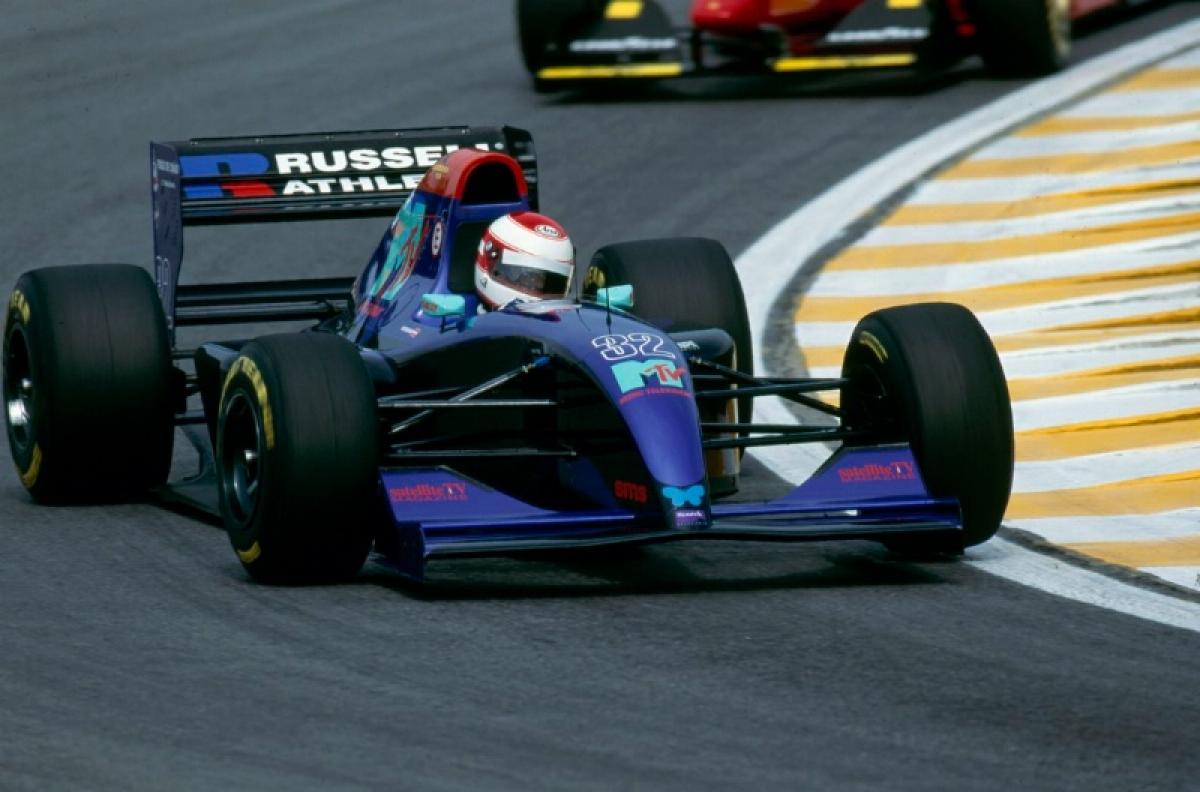In memory of ... Ayrton Senna: The Lotus F1 years
As Formula One marks the 20th anniversary of Ayrton Senna's passing, the anecdotal re-affirmation of the Senna legend will undoubtedly dwell upon the venerated cornerstones of his extraordinary career: his era-defining rivalry with Alain Prost, his performances at Monaco '88 or Donington '93, his enigmatically compelling force of personality and, tragically, his untimely death at the 1994 San Marino Grand Prix.
Naturally, the undulating narrative of bitter, acrimonious feuds and transcendent triumph holds an enduring fascination, yet the iconography of Senna's Formula One career is so closely linked to his peak years at McLaren that his 'F1 adolescence' is often overlooked. From 1985 to 1987, Ayrton's formative years at Lotus saw the traits and tropes that would become the Senna legend develop and become crystallised as facets of his personal and professional makeup.
Senna's breathtaking natural speed and single-minded determination had been evident throughout his junior racing career, but it was only when he reached Formula One that these traits became amplified; exaggerated and intensified by the pressure of performance at the pinnacle of motorsport.
Senna's very existence was fuelled by his pursuit of the Formula One world championship, by the validation of being the best of the best. The Brazilian's three seasons at Lotus gave him the proof, conviction and, crucially, the platform to demonstrate that this was a tangible goal.
Senna's maiden season, at Toleman in 1984, had been nothing short of a sensation. If Monaco, where he finished second to Prost in monsoon-like conditions, was an incredible single performance when taken in isolation, two further podium finishes for a team more familiar with struggling to qualify confirmed that Senna was a remarkable talent. In his single season with Toleman, Senna scored as many points as every other driver for the team combined in their history.
Toleman however was not a team with which Senna could conceivably hope to achieve his championship aspirations, and he willfully broke his contract with the team to sign for Lotus ahead of the 1985 season.
Senna was the first driver signed to Lotus since the death of Colin Chapman, and his team-mate for 1985 was Elio de Angelis - a dashingly enigmatic and cultured Italian with five years' experience at the team. De Angelis' natural charisma and talent marked him as a firm favourite within the team, although his apathetic attitude towards testing and the increasingly technical aspects of Formula One were a weakness Senna was primed to ruthlessly exploit.
The dedication which Senna applied to his racecraft would become one of his defining professional characteristics, and he allied this facet with his blistering speed to swing the momentum of the Lotus team away from de Angelis through the course of the season.
If Monaco '84 had alluded to Senna's wet-weather prowess, his second race for Lotus, at the Portuguese Grand Prix, confirmed his prodigious ability in the wet. Starting from his first pole position, Senna decimated the field in torrential conditions, taking his maiden victory by over a minute and lapping the entire field up to third place. It was a stunning statement of intent from Senna, declaring for the first time his front-running credentials and asserting the unrivalled skill in the wet that would become one of the most enduring attributes of the Senna legend.
Three further early-season poles followed, but with the Lotus-Renault 97T proving chronically unreliable, Senna wouldn't score again until an autumnal streak of five consecutive podiums (including a second wet-weather win at Spa) rocketed him past de Angelis and up to a final position of fourth in the standings with 38 points.
Both Senna and de Angelis demanded number one status from the team, but the end of year momentum was firmly with the Brazilian. Senna outscored de Angelis by 38 points to 33, took two wins to the Italian's one, seven pole positions to de Angelis' one, and finished on the podium every time he took the chequered flag. Indeed, Senna's seven pole positions were the most of any driver in the field - signifying the one-lap specialism that would be one of the defining traits of his career.
The battle with de Angelis set the tone for Senna's career-long struggle with a challenge from within. In Senna's mind, as the best driver on the grid, he was singularly deserving of his team's complete focus. The remarkable self-assurance and confidence of Senna, in only his second season of Formula One, to not-only out-perform but effectively force out of his own team the hugely respected and highly-rated de Angelis was an incredible internal coup.
Senna's determination to position himself as the sole focus of the team was ratified by the veto he placed on Lotus' efforts to hire Derek Warwick to partner him for 1986. Senna maintained that Lotus couldn't run competitive cars for two top drivers, and he demanded not only unequivocal number one status, but also a team-mate who would neither have the ability nor the equipment to challenge him.
This capacity for Machiavellian maneuvering and politicking would repeatedly rear itself throughout Senna's career. For 1986, Senna was joined at Lotus by Scottish aristocrat Johnny Dumfries, and the Briton, despite a strong British F3 pedigree, was duly hopelessly outclassed.
Running Lotus as a de facto single car team during the 1986 and 1987 seasons was ultimately detrimental to their long-term prospects. The team missed out on the opportunity to mount a sustained challenge for the Constructors' championship and an increased prize pot, and Senna was denied another rival in a competitive car to take points off his title challengers. Such broad considerations were of little worth to Senna though. For a man with a notoriously selfless and thoughtful disposition away from the cockpit, he could have an almost schizophrenic selfishness for matters pertaining to his chances of on-track glory.
1986 saw Senna frustrated as poor reliability again hindered his championship challenge. A strong early season, including beating Nigel Mansell's Williams to the flag by 0.014 seconds in Spain and taking his first street circuit win in Detroit, foundered through the summer. By the time of the Portuguese Grand Prix and the iconic 'four champions' photo alongside Prost, Mansell and Nelson Piquet, Senna was essentially out of the running, and a trailing fourth place in the race confirmed his elimination from title contention.
Eight further poles in 1986 confirmed Senna's incredible speed, but the Lotus could rarely do justice to the Brazilian's burgeoning talent. For 1987, Lotus acquired the turbo Honda engines that Williams had used to power to the previous season's Constructors' title, a new title sponsor in Camel cigarettes (ending 14 years of JPS branding), and Senna had a new patsy of a team-mate in Honda acolyte Satoru Nakajima. Pre-season, Senna issued an ultimatum: if he didn't win the championship, he would leave Lotus at the end of the year.
A pit-lane scuffle with Mansell after an opening lap collision at Spa was the low point of an inauspicious start to the season. Despite Senna's first Monaco win and another victory in Detroit confirming his pre-eminence around street circuits, Williams were dominant, and Senna's mind was made up to leave Lotus after finishing a lapped third behind Mansell and Piquet at Silverstone.
One positive consequence of the campaign that would have a lasting impact for Senna was the start of his relationship with Honda. The Japanese marque were clearly the pre-eminent engine supplier of the day, and were in the midst of a sequence of six consecutive Constructors' titles, and five Drivers' championships. Senna's allegiance to Honda would last until their withdrawal from the sport in 1992, and Honda engines would power each of his three world championships.
McLaren and Ron Dennis had been openly courting Senna for two years, and with the acquisition of Honda engines for 1988, and, ironically, Prost's blessing, the Brazilian announced he would be leaving Lotus ahead of the Italian Grand Prix. For Senna, the chance to beat Prost, the accepted best driver in F1 at the time, in equal machinery, would prove to the world that he was a superior driver. Thus, so ended Senna's Lotus years, and so began one of the most bitter and seismically intense periods of sustained rivalry in sporting history.
Unlike a Michael Schumacher or a Sebastian Vettel, Senna was neither a great collector of statistical records nor a man whose achievements could be best measured or illustrated qualitatively. The statistics of his three years at Lotus do make stark reading though: 48 races, 15 pole positions, 6 wins, 22 podiums and 150 points, with each season seeing a progressive improvement in his points total or championship ranking. In that same period, his team-mates collectively scored 1 pole, 1 win, 3 podiums and 44 points. Senna was seen by many as a World Champion in waiting before he'd ever sat behind the wheel of an F1 car. By the end of his apprenticeship at Lotus, it was solely a question of when he would win the first of many inevitable titles.
Senna was an unusual underdog in that he had an unwavering belief in his ultimate supremacy, but an underdog he nevertheless was at Lotus - and by definition in a sporting sense it's a zero consequence existence. Only later, with titles and legacies at stake, was Senna pushed beyond the established boundaries of sporting acceptability. However, the unwavering single-mindedness he applied to his pursuit of autonomy at Lotus was an indicator of what Senna could later become.
Nor during these years was Senna yet the figure of mythical rhetoric or spiritual illusions, or the fractious embodiment of public emotion that he became during his peak years. At Lotus, he was not performing under the intense microscope of championship contention or the extreme pressure of his rivalry with Prost. The exploration of his personal and sporting limits had yet to transcend the outer perimeters of possibility.
All of the ingredients and characteristics that would come to define Senna were present during his formative years though, and in that sense his time at Lotus was an unusual adolescence. Senna's growing pains were less severe than those he experienced at his peak, and whilst Lotus gave him the opportunity to become known as an exceptional grand prix driver, it was not a platform upon which he could achieve the greatness he believed he was destined for. The Senna legend will forever be inextricably intertwined with McLaren, but the foundations upon which he built his drive towards sporting and cultural immortality were laid during his three compelling and extraordinary seasons at Lotus.

